The northeast storm that walloped the Island last week caused an estimated $3.4 million in damages.
Martha’s Vineyard fared better than her Cape Cod and Nantucket neighbors. Still the damage incurred was enough for President George Bush to consider Dukes County one of six Massachusetts counties qualifying as a federal disaster area.
The storm battered the coastline, eroding cliffs up to 15 feet in some areas and damaging docks, beach stairs, boats and buildings.
“I’m sure we’ve had more erosion than we had from the hurricane,” said Jo-Ann Taylor, coastal planner for the Martha’s Vineyard Commission. “While we didn’t have the super-high winds of the hurricane, we had repeated pounding over a number of days.”
The week-long northeaster hit hardest on Wednesday, when Martha’s Vineyard Shipyard equipment in Vineyard Haven recorded gusts up to 78 miles per hour. Winds of 80 miles per hour were recorded at Tower Hill in Edgartown.
The tides were exceptionally high all week, surpassing Hurricane Bob levels well before high tide on Wednesday. The storm was the worst in terms of water surge since the 1954 hurricanes.
“A hurricane is four hours, but this went on day after day,” said Bob Dowley, an Eastville resident whose children’s house was hit badly.
“No one said that we would have a hurricane tide,” Mr. Dowley said. “Because no one gave this storm a name, no one took it seriously.”
Cleanup began last Thursday, after the winds began to wane and the seas to retreat. Work continued in earnest all this week.
White Brothers began removing the beach blocking the little bridge channel into Sengekontacket Pond on Tuesday. Crews had already removed the beach from Beach Road the week before.
Workers began the tedious task of shoveling out sand and seaweed three feet deep in and around the Chappaquiddick Beach Club cabanas. Outside, heavy equipment started to return the club grounds to normal.
Ayuthia, Tom Grew’s 46-foot gaff ketch, was removed from its sandy station on the Steamship Authority beach in Vineyard Haven on Tuesday. The vessel was pulled into the water by Ralph Packer’s tugboat Thuban.
While laborers sweated to return things to normal, others surveyed damage and made written reports.
Civil defense directors had a Monday deadline to submit initial damage estimates to the Federal Emergency Management Agency.
Edgartown conservation agent Jane Varkonda and building inspector Leonard Jason Jr. walked the length of North Neck, the arm of Chappy extending to the Cape Pogue gut, on Friday.
North Neck, hit directly by the storm on its Nantucket Sound side, eroded up to 15 feet in places.
“We get another storm like this and we’re going to be in deep disaster,” said Mr. Jason, referring to the structures now perilously near the edge of the cliff.
“My property took the brunt of it,” said David Belcher, superintendent of The Trustees of Reservations’ Chappy properties, Cape Pogue and Wasque.
The cliffs under the Cape Pogue lighthouse eroded 15 feet, and the windows of the lighthouse blew out during the storm. The primary dune was pushed back so far along East Beach that the former driving trails are now buried.
“The refuge is shrinking,” Mr. Belcher said.
Wasque was reopened to the public on Wednesday. Cape Pogue won’t be accessible until new roads are cut by Mr. Belcher.
The force of the tides shows on South Shore beaches such as Lucy Vincent in Chilmark.
Those beaches were in the lee of the wind. But the raging sea brought down cliff-top vegetation and swirled the clay. Glacial boulders once covered in clay are now exposed.
Miss Taylor of the commission said she continues to be amazed by the new coastal landscapes wrought by last week’s storm.
The storm undid some of Hurricane Bob’s work.
Bob blew debris into the Tisbury Great Pond. This storm took the debris back out to sea.
Bob created a handsome beach at Eastville in Oak Bluffs. This storm took that beach away.
The northeaster helped the just-completed dredging project at Lake Tashmoo by further clearing the channel. But it swept away the spoils, leaving shorefront residents on a search for sand.
Eastville still hasn’t completely emerged from the storm’s soaking. Former yards are now swamps. The “Tom Thumb” house, owned by the Metcalfs, was under water for close to a week. A line of seaweed and debris still borders Highland drive.
Much of the damage to structures mirrors damage caused by Hurricane Bob on August 19.
The big dock at the West Chop Club in Tisbury was replanked after Hurricane Bob. After the northeaster passed through, those planks littered the beach 200 to 300 yards in either direction.
Conservation commission officials are urging Islanders to consult with them before undertaking repair work.
The bureaucratic process is relaxed for storm-related repairs, but people still need to notify the conservation commission in their town before undertaking work, according to Miss Taylor.
Repairs can be made without notices of intent as long as the work is only restorative and the damages incurred do not exceed 50 per cent of the value of the structure before the storm.
Hurricane Bob and last week’s storm teach lessons.
“Will we change the way we develop and rebuild?” asks Valorie Colebrook, Tisbury health agent and Oak Bluffs civil defense director. “If we do become responsible, are we going to be able to afford it?”
State Rep. Eric Turkington said last week it may become too expensive to rebuild over and over again in low lying coastal areas. There’s an economic cost and an environmental one, he said. Now officials are rethinking coastal development patterns and are placing more stringent requirements on those areas.
“What planners try to do is just keep people from building too close to the shore in the first place,” Miss Taylor said.
Those who do build must recognize the risk.
“My risk in owning a boatyard is that I am going to get flooded,” said Philip Hale, owner of the Martha’s Vineyard Shipyard. The shipyard itself suffered more than $10,000 in damages.
“Someone else has a boat, and there is a risk the boat will go on the beach,” Mr. Hale said. “As long as man has gone to sea in ships, ships are going to end up on the beach.”
Owning property on the water, whether it’s a boat or a building, comes with responsibility, Mr. Hale said. “When a storm is coming, you can’t rely on someone else,” he said.
And this year, the storms keep coming.
Forecasters are now watching a storm brewing off Cape Hatteras. That storm is expected to arrive tomorrow afternoon and be with us for three days.
This storm, forecasters predict, will be a mild one.

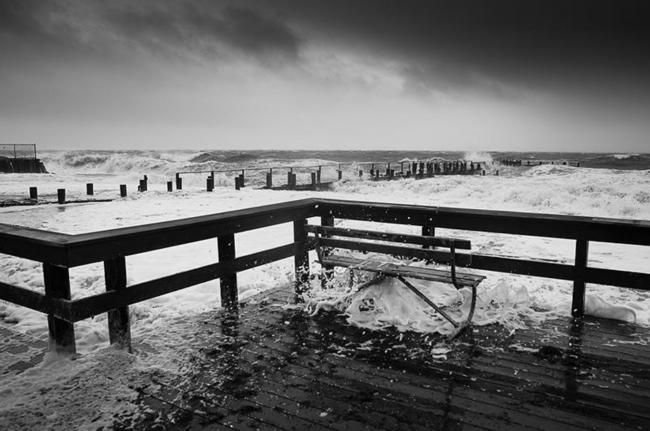



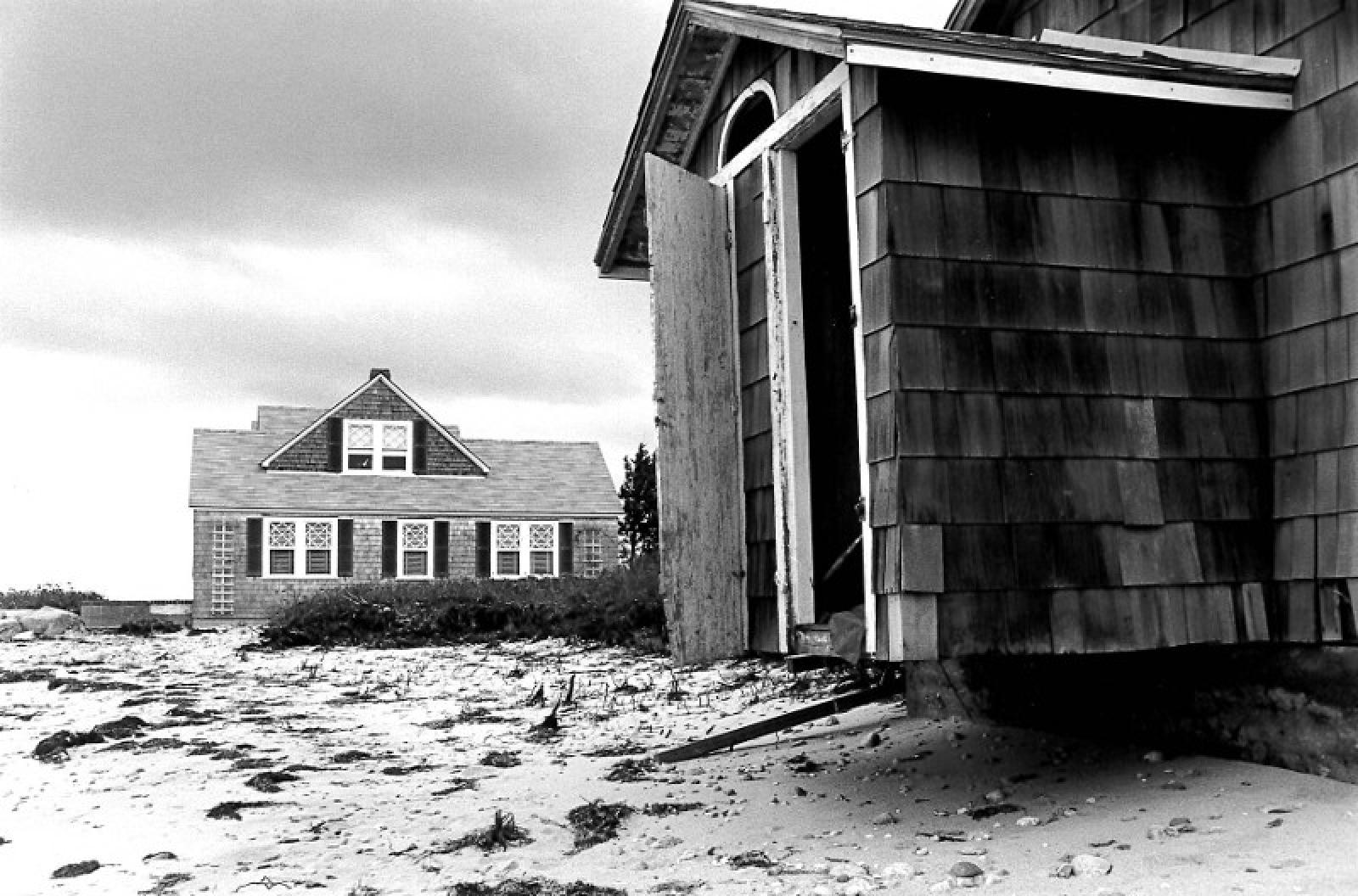

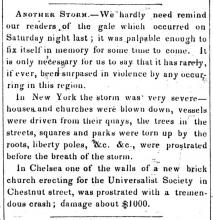
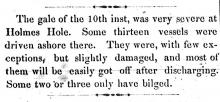

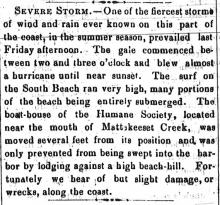
Comments